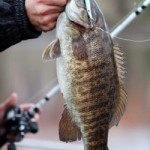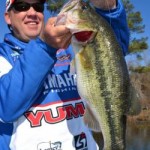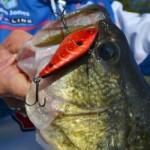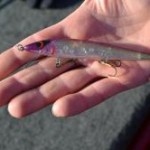Factors Related to the Recent Increases in Hunting and Fishing Participation
This study was administered by the American Sportfishing Association under Multi-State Conservation Grant F12AP00142 from the U.S. Fish and Wildlife Service.
from The Fishing Wire
After two decades of decline, hunting and fishing participation among Americans increased between 2006 and 2011, and a recent major research study pinpoints 10 major reasons for the increases. Hunting and fishing participation rates are up due to: 1) the economic recession, 2) higher incomes among some segments of the population, 3) hunting for meat and the locavore movement, 4) agency recruitment and retention programs, 5) agency access programs, 6) agency marketing and changes in licenses, 7) current hunters and anglers participating more often, 8) returning military personnel, 9) re-engagement of lapsed hunters and anglers, and 10) new hunters and anglers, including female, suburban, and young participants.
The Background
Throughout the latter half of the 2000s, numerous state-level trend surveys conducted by Responsive Management consistently showed increases in hunting and fishing participation. Given this clear pattern emerging across multiple states and regions, in 2011 Responsive Management initiated a project with the American Sportfishing Association, Southwick Associates, and the Oregon Department of Fish and Wildlife under a Multi-State Conservation Grant from the U.S. Fish and Wildlife Service to identify and better understand factors related to increases in hunting and fishing participation throughout the United States.
“The fact that a variety of factors was responsible for the increases should not take away from the importance of each individual factor. The research isolated each of these factors as having a notable impact on the increase in hunting and fishing participation between 2006 and 2011.”
–Mark Damian Duda, Executive Director of Responsive Management
The Indicators
Two major data sources are available for measuring hunting and fishing participation trends on a national level: license sales data collected by the individual states and compiled by the U.S. Fish and Wildlife Service, which are known as “Federal Aid” data, and the National Survey of Fishing, Hunting, and Wildlife-Associated Recreation, conducted every 5 years since 1955 by the U.S. Fish and Wildlife Service and the U.S. Bureau of the Census.
At the time the grant proposal was submitted in 2011, the only available measurement supporting the research team’s hypothesis of a nationwide increase in hunting and fishing were Federal Aid data measuring license sales for the two activities from recent years; the other critical indicator, the 2011 National Survey of Fishing, Hunting, and Wildlife-Associated Recreation, had not yet been released. However, shortly after the grant was secured, results from the 2011 National Survey determined that, between 2006 and 2011, hunting participation among Americans increased 9% and fishing participation increased 11% nationwide.
The Research Methodology
With the evidence in hand, Responsive Management and its partners began implementing the study, which entailed a combination of quantitative and qualitative research components. To examine factors responsible for the upswing in hunting and fishing participation, the researchers collected data from multiple stakeholder sources, accounting for perspectives ranging from agency professionals to hunters and anglers themselves. Overall, the study methodology included a comprehensive review of past research examining hunting and fishing participation; personal interviews with and a survey of fish and wildlife agency personnel representing hunting, freshwater fishing, and saltwater fishing divisions; a multivariate analysis of national hunting and fishing license sales data; and a scientific telephone survey of hunters and anglers in the states with the most notable increases in participation between 2006 and 2011.1 For the telephone survey component, a total of 1,400 interviews were completed with hunters in seven states that saw some of the most growth in hunting during the period of interest (Alabama, Alaska, Indiana, Idaho, Mississippi, New York, and South Dakota) and anglers in seven states that experienced some of the largest increases in fishing participation over the same period (Alaska, Idaho, New York, North Carolina, South Dakota, Vermont, and Washington). The survey of hunters and anglers explored various demographic and behavioral characteristics of new and returning participants in the two activities and also measured the relative importance of various factors that influenced participants to either take breaks from or return to the activities.
The data were collected and analyzed over an 18-month period, with the results from each study component examined independently and as a whole. The overall data eventually revealed that hunting and fishing participation increased between 2006 and 2011 not because of a single major reason, but because of a combination of factors, a perfect positive storm of reasons ranging from nationwide economic conditions to efforts on the part of individual state agencies to the confluence of key participant groups entering or re-entering the sports. Mark Damian Duda, executive director of Responsive Management, notes, “The fact that a variety of factors was responsible for the increases should not take away from the importance of each individual factor. The research isolated each of these factors as having a substantial impact on the increase in hunting and fishing participation between 2006 and 2011.”
Reason 1: The Economic Recession
The study found a negative statistical correlation between hunting license sales and increases in housing starts–as housing starts decline, hunting participation increases.2 The mortgage crisis and economic recession that took hold of the country at the end of 2008 resulted in fewer housing starts as fewer building permits were issued. Because some of the top occupations of hunters include building-related fields (e.g., construction, carpentry, plumbing, electrical, and craftsman), a disproportionate percentage of hunters were under- or unemployed during the period between 2006 and 2011, leaving them with more free time in which to hunt. This is in contrast to Responsive Management research conducted during the height of the housing boom, when many hunters were not hunting due to a lack of time because of work obligations.
Reason 2: Higher Incomes Among Some Segments of the Population
Interestingly, the research indicates that hunting and fishing increased because of both the lower end of the economic spectrum as well as the upper end: the multivariate analysis also identified a positive association between increasing per capita income and participation in one or both outdoor activities, suggesting a scenario where some hunters and anglers have more to spend and can thus afford to take more hunting and fishing trips.
Reason 3: Hunting for Meat and the Locavore Movement
Somewhat related to the country’s economic downturn was growth in the segment of sportsmen motivated to hunt or fish primarily for the food: the period between 2006 and 2011 saw an increase not only in the proportion of participants who hunted or fished as a means of putting meat on the family table, but also in the percentage of “locavore” hunters and anglers, that is, individuals who go afield for reasons of self-sufficiency and a desire for organic, local, chemical-free meat. When hunters in the survey were read a list of factors that may have influenced them to go hunting, the top factor that was a major or minor influence was interest in hunting as a source of natural or “green” food, with
Camp ASCCA, Creative Commons License
68% of hunters naming this as an influence. When a similar list was read to anglers, 51% said that fishing as a natural or “green” food source was an influence in their decision to go fishing. Finally, in an open-ended question (where no answer set was read and respondents could name anything that came to mind), 56% of hunters said that they hunted for food, and 32% of anglers fished for fresh fish to eat. The desire for food, whether for economic reasons, locavore motivations, or a hybrid of both, played an important role in the recent increases in hunting and fishing participation. (Click here for a summary of research examining the growing motivation of hunting for meat.)
Reasons 4 and 5: Agency Recruitment and Retention Programs and Access Programs
A few key efforts on the part of individual state fish and wildlife agencies also helped clear a path for more robust participation in hunting and fishing. Of particular importance was the implementation of hunting and fishing recruitment and retention programs, which provide instruction to participants of all age levels and, in many cases, offer program events year-round. After a decade of states’ implementation of recruitment and retention programs, the intended results are beginning to manifest. (Click here for more information about Responsive Management research on recruitment and retention programs.)
More hunters also made it into the field thanks to programs that opened up access to hunting lands: the analysis revealed that the percentage of hunters in the state rating the quality of overall access to hunting lands as excellent or good had a positive effect on participation. Access is one of the most important issues that acts as a constraint to hunters; when access is good, participation is unimpeded. With ample research on the potential value in these types of programs having been conducted in recent years, the study was able to show definitively that these efforts are now taking effect and producing results. (For more information, please visit Responsive Management’s summaries of research on hunting and fishing access.)
Reason 6: Agency Marketing and Changes in Licenses
Many agencies in the survey and personal interviews emphasized the importance of their marketing efforts in recent years, not only for programs designed to boost participation but in the advertising of new or repackaged hunting and fishing licenses. Additionally, hunters and anglers were also asked about factors that prompted them to hunt and fish. Among hunters, 22% said that marketing efforts collectively had been an influence in their decision to go hunting. Among anglers, 20% said that marketing had been an influence in their decision to go fishing.
The marketing aspect of efforts to increase sales of hunting and fishing licenses dovetails with previous Responsive Management research that has established a correlation between increases in license sales and changes in license structure (i.e., the availability of new or modified hunting and fishing licenses). Such changes, which can include repackaging of licenses or a recombination of various privileges, can have the effect of marketing because the hunter and/or angler may perceive that a better deal is available, that the license is “new and improved,” or he or she may simply be reminded of the opportunities to hunt and fish.
Reasons 7 to 10: Key Groups Driving the Increases
In pinpointing the specific markets that helped drive the increases in hunting and fishing participation, the survey was able to isolate several groups of particular importance: current and longtime hunters and anglers simply participating more often, returning military personnel resuming their participation in the activities, the reactivation of former and lapsed hunters and anglers, and new female participants.
The project examined the characteristics of these new and returning hunters and anglers. Crosstabulations of established hunters and new/returning hunters highlighted some differences that help reveal who the new/returning hunters are. Compared to established hunters, these new/returning hunters are slightly more often female, are somewhat younger, are more often in the military or college, are slightly more suburban, have not been living in the same state for as long, and are more often hunting to be with friends.
Michael J Zealot, Creative Commons License
Likewise, compared to established anglers, the group of new/returning anglers again are slightly more often female, are markedly more often retired with new free time, are slightly more often identifying themselves as homemakers, are slightly more suburban, have not been living in the same state for as long, and are more devoted to fishing in freshwater (i.e., did not fish in saltwater as much as established anglers–because anglers could fish in both types of waters, established anglers fished in freshwater about as much as new/returning anglers, but they fished in saltwater much more often than did new/returning anglers).
The full report for the study is available by clicking here or by visiting
www.responsivemanagement.com/download/reports/Hunt_Fish_Increase_Report.pdf.
Responsive Management is planning additional research to continue exploring the impacts of each of the factors and variables uncovered in this study.
Study Methodology
Personal interviews with state fish and wildlife agency personnel.
Surveys of fish and wildlife agency staff regarding hunting and fishing participation and license sales data for hunting, freshwater fishing, and saltwater fishing.
Multivariate analysis of license sales data.
Review of past research on hunting and fishing participation.
A survey of hunters and anglers in states with large hunting or fishing participation increases according to the 2011 National Survey of Fishing, Hunting, and Wildlife-Associated Recreation.
Final evaluation and analysis of all data together and completion of final report.
States surveyed with marked hunting participation increases: Alabama, Alaska, Indiana, Idaho, Mississippi, New York, and South Dakota.
States surveyed with marked fishing participation increases: Alaska, Idaho, New York, North Carolina, South Dakota, Vermont, and Washington.





